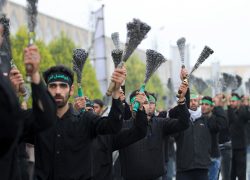I was about four or five years old when I would link my tiny hands with my parents’, grab our travel bag, and head to the bus terminal. As a child, I didn’t know what a terminal was, but I knew it had a playground; a ride like a helicopter that would shake for a few short minutes, playing children’s songs. I always looked forward to going to the terminal just for that ride. Sometimes, I would gaze at the small and large trees in the terminal’s courtyard and watch the little sparrows flitting among them.
In late 1988, to organize the city’s terminals and garages, Kaveh Terminal, followed by Soffeh, Jey, Samadiyeh, and ZayandehRood terminals, were constructed in Isfahan.
Kaveh Terminal covers an area of approximately 100,000 square meters and offers various amenities such as a hotel, a bathhouse, a repair garage, a diesel pump, and more.
Kaveh Terminal seems to be well-organized. Informative signs effectively guide passengers to different sections, and the presence of a hair salon, a mother and child room, and other facilities indicates the terminal’s advanced features.
Moreover, various patios with water features and diverse plants can be found in different parts of the Kaveh Terminal hall, which somewhat alleviates the weariness of travelers and creates a pleasant atmosphere within the terminal.
In most terminals, seating arrangements follow a linear pattern, but in Kaveh Terminal’s hall, chairs are arranged in a circular manner around the columns, symbolizing friendship and affection. Even outside the hall, in the bus waiting area, wooden chairs are adequately provided for passengers to minimize their fatigue. The outdoor greenery in the bus waiting area also reduces the psychological stress of travel.
Seyed Hadi Imami, an architect and researcher, in an interview with Isfahan-e Ziba, said: “The architecture of this terminal is a combination of concrete and brick, which is suitable in terms of modernity and Isfahan’s architectural style. The ceilings are separated by skylights, giving the building a light and airy feel. The use of certain elements found in mosques and traditional buildings has given Kaveh Terminal an cultural and identity-based character.”







